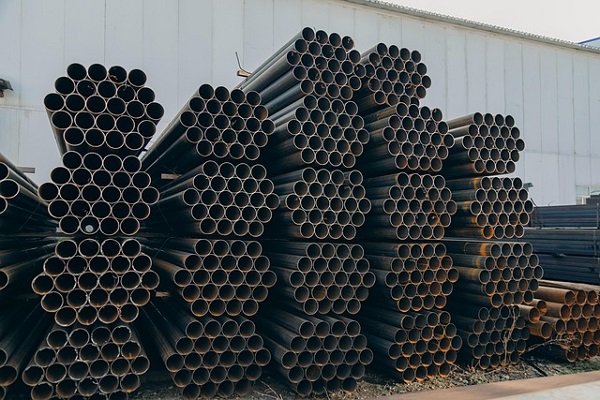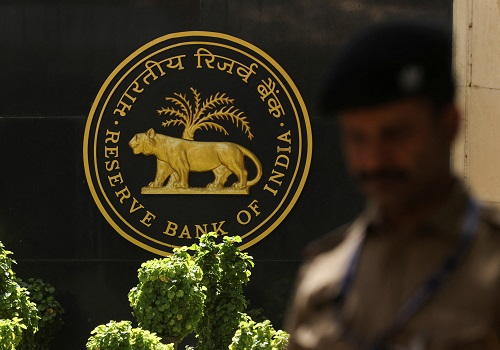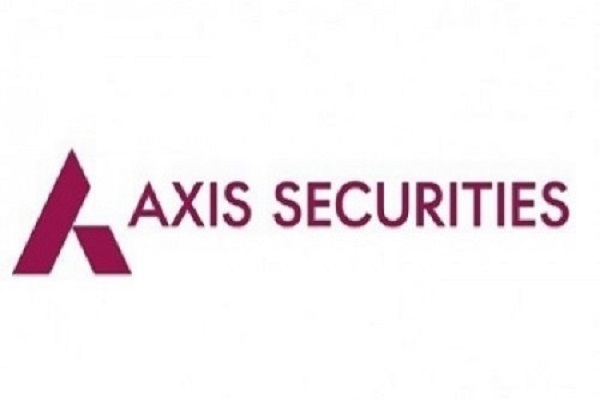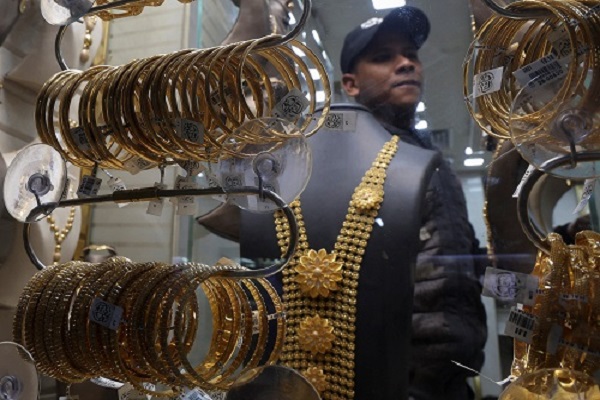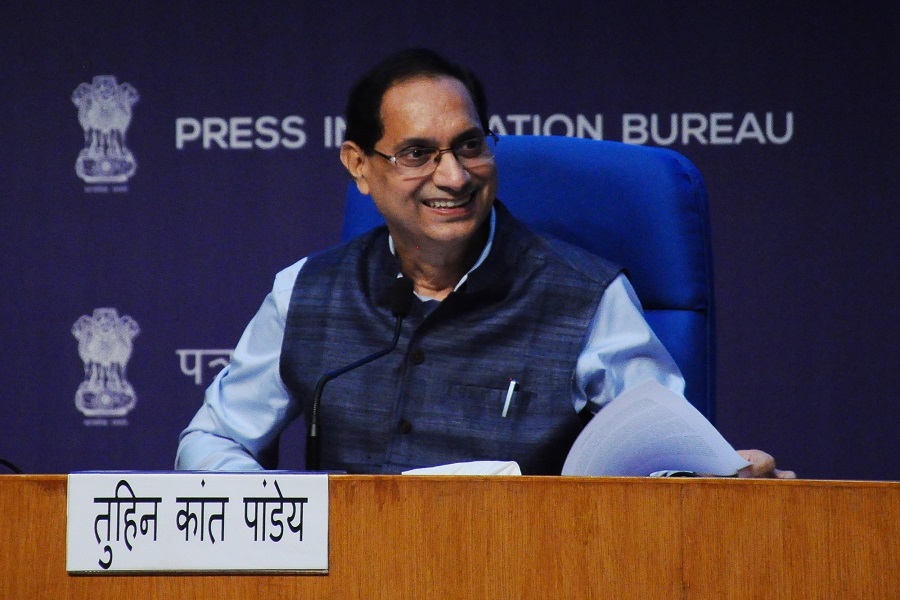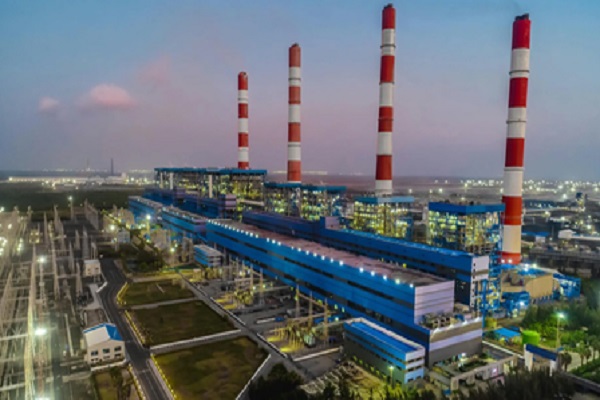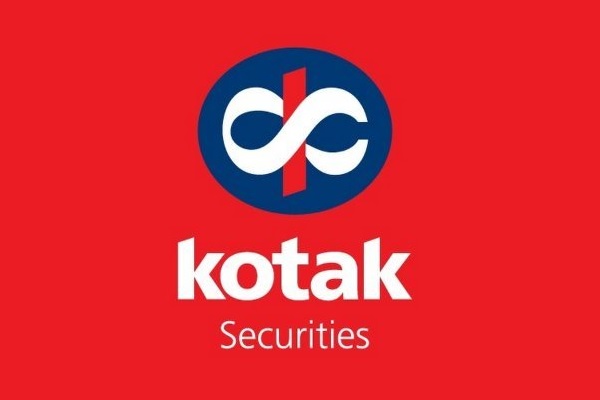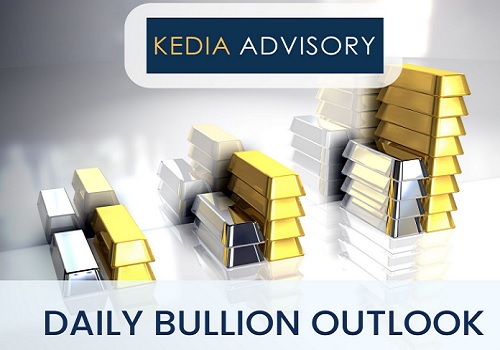Jeera trading range for the day is 21790-22630 - Kedia Advisory

Gold
Gold prices surged by 2.17% to Rs.94,649, driven by a weaker U.S. dollar and renewed market optimism surrounding U.S.-China trade negotiations. President Trump’s remarks that China is inclined toward a trade deal, albeit without concrete details, boosted market sentiment. However, with Beijing demanding the removal of unilateral tariffs for meaningful dialogue, uncertainty persists. Meanwhile, investors are closely watching the upcoming U.S. Federal Reserve policy meeting, where interest rates are expected to remain unchanged despite political pressure for a cut. In India, gold swung to a premium for the first time in five months, reflecting a revival in domestic demand driven by festive buying and a recent correction in prices. Dealers moved from offering steep discounts of up to $80 per ounce to a premium of $3, highlighting a sharp turnaround in sentiment. In global markets, China maintained strong premiums of $34–$48, while Singapore and Hong Kong saw more moderate premiums, and Japan reported flat to slightly discounted trade. According to the World Gold Council, global gold demand rose 1% year-on-year in Q1 2025 to 1,206 metric tons. Investment demand surged 170% on strong ETF inflows and a 14% rise in bar purchases, offsetting a 32% slump in coin demand. Technically, gold is under fresh buying as open interest rose 0.69% to 14,888. Immediate support is at Rs.93,430 and Rs.92,215, while resistance is seen at Rs.95,355 and Rs.96,065.
Trading Ideas:
* Gold trading range for the day is 92215-96065.
* Gold rose driven by a weaker U.S. dollar, with traders awaiting further clarity on U.S.-China trade negotiations.
* President Donald Trump said he believed China wanted to do a deal, though he provided no specifics or timeline.
* Gold share in India's forex reserves rose to 11.7% by March 2025.
Silver
Silver prices edged higher by 0.38% to Rs.94,424, supported by a softer U.S. dollar and persistent trade-related uncertainties between the U.S. and China. While President Trump signaled a willingness to reduce tariffs to promote trade, no concrete progress has been made, as China insists that the U.S. must first remove all unilateral tariffs for talks to move forward. Investors are also focused on the upcoming U.S. Federal Reserve policy meeting, where rates are expected to remain unchanged. The ongoing geopolitical uncertainty and a weaker dollar have buoyed safe-haven demand for silver. From a fundamental standpoint, the silver market continues to reflect a tight supply-demand balance. For the fifth straight year, a significant global deficit is projected in 2025, driven by strong industrial demand. Industrial silver fabrication is expected to rise by 3%, surpassing 700 million ounces, largely due to structural growth in green energy sectors. Overall global silver demand is forecast to remain stable at 1.20 billion ounces, with gains in industrial applications and physical investment balancing out declines in jewelry and silverware demand. Jewelry demand is expected to fall 6%, with India contributing most to the decline due to high local prices. Technically, the market is witnessing fresh buying with a 5.41% rise in open interest to 19,269. Support is at Rs.93,790 and Rs.93,150, while resistance is likely at Rs95,215 and Rs.96,000.
Trading Ideas:
* Silver trading range for the day is 93150-96000.
* Silver rose as the U.S. dollar softened amid persistent concerns over US-China trade relations.
* President Donald Trump said he has no plans to speak with his Chinese counterpart this week
* China indicated it may consider starting trade talks with the US, though it emphasized that Washington must first remove all unilateral tariffs.
Crude oil
Crude oil prices declined sharply by 2.19% to settle at Rs.4,832 amid growing concerns over a potential global supply glut following the latest OPEC+ decision to ramp up production. The group agreed to raise output in June by 411,000 barrels per day (bpd), marking the second consecutive month of production hikes. If this trend continues, up to 2.2 million bpd could be added to the market by November, led by Saudi Arabia’s intent to penalize member countries that have exceeded their quotas. This move has overshadowed any bullish sentiment from geopolitical tensions or improving trade dialogue prospects between China and the U.S. On the geopolitical front, tensions in the Middle East remain high. Israeli Prime Minister Netanyahu has promised retaliation against the Houthi rebels and indirectly, Iran, after a missile landed near Israel’s main airport. Iran has vowed to strike back if attacked, adding a layer of instability to the oil market. In the U.S., crude inventories fell by 2.696 million barrels last week, defying expectations of a build. However, this bullish signal was tempered by a rise in Cushing hub inventories and mixed movements in refined fuels: gasoline stocks dropped by 4.002 million barrels, while distillate fuels rose by 0.937 million barrels. Technically, the market is under fresh selling, with a 14.46% rise in open interest to 21,454. Immediate support lies at Rs.4,746, and a break below could test Rs.4,660. Resistance is seen at Rs.4,896, with further upside capped near Rs.4,960.
Trading Ideas:
* Crudeoil trading range for the day is 4660-4960.
* Crude oil dropped after OPEC+ confirms June hike of 411,000 bpd.
* Total added supply may reach 2.2 million bpd by November.
* Saudi Arabia aims to discipline quota violators within OPEC+.
Natural gas
Natural gas prices fell by 2.15% to settle at Rs.300, weighed down by forecasts of lower demand next week and a decline in flows to liquefied natural gas (LNG) export terminals. Despite recent production cuts and expectations of stronger demand this week, market sentiment remained bearish due to macro factors and speculative activity. Speculators slashed their net long positions for the eighth consecutive week, reaching the lowest level since January, as per the U.S. Commodity Futures Trading Commission. In terms of supply, gas output in the Lower 48 U.S. states dropped to an average of 103.7 billion cubic feet per day (bcfd) so far in May, down from a record 105.8 bcfd in April. The decline includes a sharp drop to 103.5 bcfd on Monday, the lowest in 10 weeks. Meanwhile, inventories saw a significant build of 107 billion cubic feet during the week ending April 25, the highest injection in two years, bringing total stocks to 2.041 trillion cubic feet—1% above the five-year average and 17.6% higher than a year ago. The U.S. Energy Information Administration (EIA) projects both natural gas output and demand to hit record highs in 2025, with dry gas production forecasted at 104.6 bcfd and consumption at 90.7 bcfd. Technically, the market is under long liquidation, with open interest dropping by 22.96% to 11,715. Immediate support is at Rs.294, with further downside possible to Rs.287.9. Resistance is seen at Rs.311.1, and a break above may push prices toward Rs.322.1.
Trading Ideas:
* Naturalgas trading range for the day is 287.9-322.1.
* Natural gas slid pressured by forecasts for weaker demand and reduced flows to LNG export terminals.
* Speculators cut their net long futures and options positions for an eighth week in a row to the lowest since January.
* US LNG export feedgas hit record high in April
Copper
Copper prices edged up by 0.15% to settle at Rs.842.5, supported by a weaker U.S. dollar and persistent uncertainty surrounding U.S.-China trade relations. President Donald Trump’s openness to reduce tariffs on Chinese imports added a slight bullish tilt to market sentiment, although no direct talks are scheduled with China this week. Beijing remains firm that negotiations will not move forward unless unilateral tariffs are withdrawn. Meanwhile, optimism around potential trade deals with India, Japan, and South Korea is also influencing broader investor sentiment. Fundamental data provided mixed cues. On the bullish side, U.S. job data for April surpassed expectations, easing concerns over a trade-induced slowdown and bolstering industrial metal demand. However, the U.S. economy contracted by 0.3% in Q1, its first decline in three years, and China’s NBS manufacturing PMI hit a 16-month low, with export orders plunging sharply—casting a shadow over future demand. On the supply side, Chile, the world’s largest copper producer, reported a 9.1% year-on-year increase in March output, reaching 477,049 metric tons. Meanwhile, inventories on the Shanghai Futures Exchange fell sharply by 23.5%, indicating tightening domestic availability in China. The global refined copper market posted a 61,000 metric ton surplus in February, slightly down from January’s 90,000 metric tons. Technically, copper is undergoing short covering, with open interest dropping slightly by 0.14% to 7,000. Immediate support lies at Rs.838.9, and a breach below this could test Rs.835.4. On the upside, resistance is seen at Rs.846.7, with further gains potentially extending to Rs.851.
Trading Ideas:
* Copper trading range for the day is 835.4-851.
* Copper gains as the dollar weakened on lingering uncertainty about US-China trade relations.
* President Donald Trump stated he has no plans to speak with his Chinese counterpart this week.
* Investors are also awaiting further developments on potential US trade agreements with India, Japan, and South Korea.
Zinc
Zinc prices closed marginally higher by 0.04% at Rs.245.8, supported by easing recession concerns in the U.S. and improved sentiment around global manufacturing activity. U.S. President Donald Trump’s move to delay the implementation of reciprocal tariffs and his indication of potential new trade deals have helped alleviate fears of a trade-driven slowdown, which previously weighed heavily on metal demand globally. However, downside pressure persists as Chinese factory overcapacity remains a structural concern, contributing to a year-to-date decline of nearly 5% in zinc futures. The global refined zinc market is expected to record a surplus in 2025, according to the International Lead and Zinc Study Group (ILZSG), driven by higher mined zinc output and improved concentrate availability. Global demand is projected to rise modestly by 1% to 13.64 million tons, while refined output is forecast to grow by 1.8% to 13.73 million tons. Mined output is expected to increase by 4.3% to 12.43 million tons, reversing the decline seen over the past three years due to various mine closures. In China, refined zinc output surged nearly 14% month-on-month in March and over 4% year-on-year. This was primarily due to the end of Chinese New Year-related maintenance and improved smelter economics driven by higher treatment charges (TCs) and sulphuric acid prices. Technically, zinc is in a short covering phase as open interest declined by 2.01% to 3,126 while prices edged up. Immediate support lies at Rs.244.3, with a break below potentially testing Rs.242.8. On the upside, resistance is seen at Rs.247.2, with further gains capped near Rs.248.6.
Trading Ideas:
* Zinc trading range for the day is 242.8-248.6.
* Zinc gains as hopes for progress in U.S. tariff talks with China provided support.
* U.S. President believed there was a "very good chance" his administration could do a deal with China.
* Zinc inventories in warehouses monitored by SHFE fell 5.6% from last Friday, the exchange said.
Aluminium
Aluminium prices declined slightly by 0.11% to settle at Rs.232.4, as the market balanced cautious optimism over global trade developments against signs of rising production and weaker economic indicators. Market sentiment was buoyed by comments from U.S. President Donald Trump suggesting potential trade agreements with India, Japan, and South Korea, alongside a possible easing in tensions with China. However, optimism was tempered by news that the U.S. economy contracted by 0.3% in Q1—its first decline in three years—due to rising imports and subdued consumer spending, which raised concerns over demand for industrial metals like aluminium. On the supply side, global aluminium output remains strong. According to the International Aluminium Institute (IAI), global primary aluminium production rose by 2.3% year-on-year in March to 6.227 million tonnes. In China, output increased by 4.4% to 3.75 million tonnes in March alone, with total Q1 production up 3.2% year-on-year to 11.07 million tonnes. Annualised output is now just shy of the 45 million tonne cap introduced in 2017, raising the possibility of a production ceiling being tested. Meanwhile, aluminium inventories on the Shanghai Futures Exchange fell 1.5% week-on-week, suggesting some tightening in Chinese availability. Stocks at major Japanese ports also declined by 1.2% in March. Technically, the market is under fresh selling pressure, with open interest up by 0.13% to 5,205. Aluminium has support at Rs.231.3, with a breach potentially leading to Rs.230.1. Resistance is seen at Rs.233.5, and a move above this could open the path to Rs.234.5.
Trading Ideas:
* Aluminium trading range for the day is 230.1-234.5.
* Aluminium steadied as softer concerns of a US recession limited pessimism on global manufacturing activity.
* US President Trump delayed the start of his aggressive reciprocal tariffs and signaled incoming trade deals.
* Major aluminium producers in South East Asia noted that higher alumina supply this year will lower production costs.
Cottoncandy
Cottoncandy prices rose modestly by 0.43% to settle at Rs.54,150, supported by supply-side concerns as the Cotton Association of India (CAI) further lowered its production forecast for the 2024-25 season. The latest CAI revision pegs domestic output at 291.30 lakh bales of 170 kg each, down from the earlier estimate of 295.30 lakh bales, primarily due to reduced output in Maharashtra. The total cotton supply by the end of March, including imports and opening stocks, is estimated at 306.83 lakh bales. Notably, cotton imports are expected to more than double to 33 lakh bales this season from 15.20 lakh bales last year, as domestic production continues to shrink. Despite the projected increase in imports and reduced exports (down to 16 lakh bales from 28.36 lakh bales last year), mill demand remains subdued. Mills are reportedly well-stocked, leading to limited immediate buying, capping upside momentum in prices. Ending stocks for the season are expected to fall to 23.49 lakh bales, down from 30.19 lakh bales in the prior year, indicating tighter year-end availability. Globally, the U.S. balance sheet for 2024/25 saw a 100,000-bale cut in exports and a corresponding rise in ending stocks. The world balance sheet reflects reductions in production and consumption, especially in China and Indonesia, with global mill use down by 520,000 bales. Technically, the market is witnessing short covering, with open interest declining by 0.81% to 246. Support lies at Rs.54,120, with further downside risk to Rs.54,100. Resistance is seen at Rs.54,160, and a breakout above this could push prices toward Rs.54,180.
Trading Ideas:
* Cottoncandy trading range for the day is 54100-54180.
* Cotton prices gained as CAI expects a shrinkage in the domestic crop
* CAI has estimated the total cotton supply till the end of March including the imports at 306.83 lakh bales.
* Cotton exports for the 2024-25 season are pegged at 16 lakh bales, lower by 12.36 lakh bales
* In Rajkot, a major spot market, the price ended at 26065.25 Rupees dropped by -0.35 percent.
Turmeric
Turmeric prices declined by 3.05% to settle at Rs.13,914, as traders booked profits following a recent price rally fueled by supply constraints. The decline in arrivals, as farmers held back produce in hopes of better off-season prices, had earlier driven prices upward. Despite a 10% increase in turmeric acreage to 3.30 lakh hectares this season, production is not expected to rise proportionally due to untimely rains and adverse weather, which may impact crop yields negatively. Reports from key growing areas like Nanded suggest a potential 10-15% fall in output due to small rhizomes and crop rot, though more clarity is expected as harvesting progresses. Exports supported sentiment, with turmeric exports jumping by 12.93% to 1.49 lakh tonnes during April–January 2025, compared to the same period last year. However, a month-on-month decline of 23.17% in January exports could indicate seasonal demand fluctuations. On the import front, India saw a significant 70.13% rise in turmeric imports during the same period, reflecting increased domestic demand and possibly shortfalls in quality or quantity in the local crop. In the spot market at Nizamabad, prices dropped by 1.46% to Rs.14,401.45, indicating a broader correction in physical trade as well. Technically, turmeric is under long liquidation, with open interest plunging by 18.6% to 8,490 lots. The immediate support is at Rs.13,732, and a break below could push prices towards Rs.13,552. Resistance is seen at Rs.14,210, and a move above this level could test Rs.14,508 in the short term.
Trading Ideas:
* Turmeric trading range for the day is 13552-14508.
* Turmeric dropped on profit booking after prices gained as arrivals dropped as farmers held back supplies.
* New crop yields are expected to be 10-15% lower this year, with the Nanded region particularly affected.
* Further concerns seen over slow growth of rhizomes and low yield estimates persist.
* In Nizamabad, a major spot market, the price ended at 14401.45 Rupees dropped by -1.46 percent.
Jeera
Jeera prices declined by 0.83% to settle at Rs.22,115 amid increasing supplies and subdued export demand. The total arrivals in major mandis rose significantly to 32,900 bags from 28,000 in the previous session, exerting downward pressure on the market. Despite initial delays in sowing due to unfavourable weather in Gujarat and Rajasthan, crop conditions have since improved, and production levels for the current season are expected to match last year's output. However, with farmers still holding approximately 20 lakh bags of cumin and an estimated 3-4 lakh bags expected to be traded by the season's end, a significant carry-forward stock of around 16 lakh bags is anticipated, further dampening price prospects. On the trade front, jeera exports surged by 66.98% during April–January 2025, reaching 182,167.70 tonnes, compared to 109,097.06 tonnes in the same period last year. While January 2025 exports dipped by 5.50% month-on-month, they rose 37.82% year-on-year, highlighting strong overseas demand despite current sluggishness. On the flip side, imports saw a drastic decline of 93.84% during the same period, reflecting robust domestic supply sufficiency. In the Unjha spot market, jeera prices also softened slightly by 0.13% to Rs.22,838.65, aligning with futures market trends. Technically, jeera is in a long liquidation phase, as indicated by a sharp 11.46% drop in open interest to 3,870 lots. Immediate support lies at Rs.21,950, with a potential dip toward Rs.21,790 if pressure continues. On the upside, resistance is seen at Rs.22,370, and a breakout could push prices to Rs.22,630.
Trading Ideas:
* Jeera trading range for the day is 21790-22630.
* Jeera prices dropped due to comfortable supplies
* Total arrivals in major mandis rose to 32,900 bags from 28,000 bags, increasing supply side.
* The current season is expected to have similar production levels as last year.
* In Unjha, a major spot market, the price ended at 22838.65 Rupees dropped by -0.13 percent.
Views express by all participants are for information & academic purpose only. Kindly read disclaimer before referring below views
